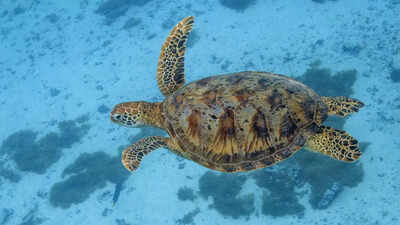Green turtles rediscovered: Historic comeback reveals decades of conservation success

The green turtle’s remarkable recovery from near extinction is being hailed as a major conservation success. Once heavily hunted for their meat and decorative shells, these long-distance sea travellers experienced severe population declines. Over decades, coordinated global conservation efforts—including beach patrols, egg protection programmes, hatchling releases, and measures to reduce bycatch—have helped populations rebound. As a result, green turtles have been reclassified from Endangered to Least Concern on the IUCN Red List, offering hope for the species’ long-term survival. Their comeback demonstrates that dedicated protection and community engagement can reverse declines, providing a powerful example of how sustained conservation efforts can safeguard marine wildlife and inspire further initiatives to protect other threatened species around the world.
Green turtle populations rebound after decades of conservation efforts
Recent global studies indicate that green turtle populations are steadily increasing after years of targeted conservation initiatives. Once classified as Endangered, the species has now been reclassified as Least Concern on the IUCN Red List. This recovery reflects sustained international measures, including beach patrols, egg protection programmes, hatchling releases, and strategies to reduce bycatch in fishing nets.As reported by BBC, Dr Nicolas Pilcher of the Marine Research Foundation in Sabah, Malaysia, described this milestone as “a critical achievement” and a motivation for future conservation victories. Green turtles, among the largest sea turtle species, are named for the greenish hue of their body fat, which comes from their plant-based diet.
Scientists stress the need for ongoing vigilance to protect green turtles
Professor Brendan Godley from the University of Exeter highlighted that the positive trends are the result of over fifty years of concerted global effort. “Sea turtles are iconic species that inspire people,” he noted. “Hundreds of thousands of individuals have worked tirelessly to protect them, and it is showing results.” Despite the encouraging recovery, experts warn that green turtle numbers remain far below historical levels. Ongoing threats such as fishing, habitat loss, and climate change continue to pose challenges. On Australia’s Raine Island, for instance, fewer hatchlings are emerging, highlighting the importance of sustained protection measures.
Red List update reveals mixed outcomes for global wildlife
The most recent IUCN Red List, released at the World Conservation Congress in Abu Dhabi, now covers 172,620 species, with 48,646 facing extinction. Species assessments are continually updated based on the latest population and habitat information. While green turtles have experienced a notable recovery, other species are struggling. Arctic seals, which rely on sea ice for breeding and resting, are declining due to warming temperatures. The hooded seal has been uplisted from Vulnerable to Endangered, while bearded and harp seals are now classified as Near Threatened.Also Read | Huge NASA research equipment falls from sky onto Texas farm; local woman stunned | Watch






